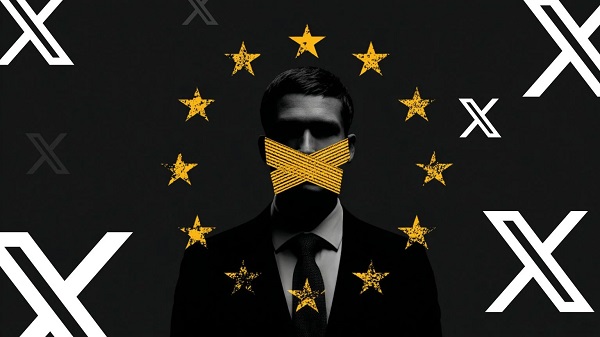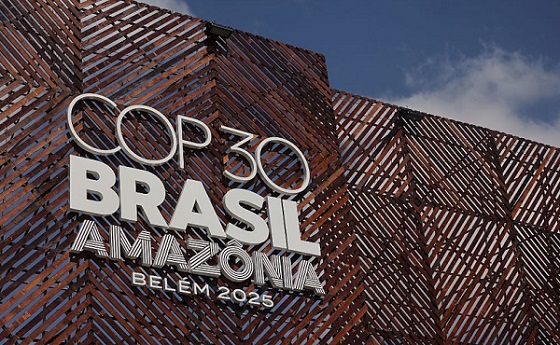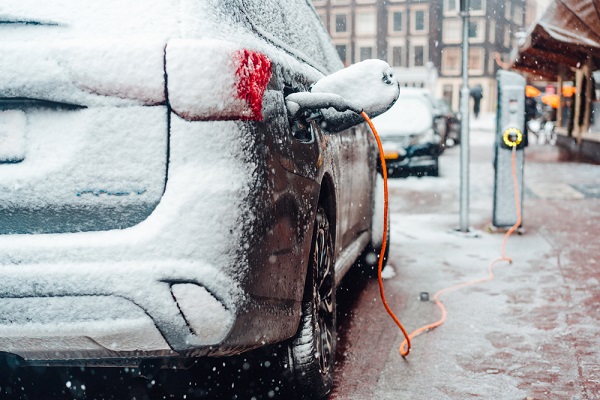Business
The Problem of Corporate Tax Rate Hikes

Why it’s nearly impossible to avoid causing more harm than good
Are Canadian corporations paying their share? Well, what is their share? And before we go there, just how much are Canadian corporations paying?
According to Statistics Canada, in the second quarter of 2024 the federal government received $221 billion from all income tax revenues (excluding CPP and QPP). Provincial governments took in another $104 billion, and local (municipal) governments got $21 billion. Using those numbers, we can (loosely) estimate that all levels of government raise somewhere around $1.38 trillion annually.
The Audit is a reader-supported publication. To receive new posts and support my work, consider becoming a free or paid subscriber.
If you’re curious (and I know you are), that means taxes cost each man, woman, and child in Canada $33,782 each year. Trust me: I feel your pain.
Based on Statistics Canada data from 2022 (the latest comparable data available), we can also say that roughly ten percent of those total revenues come from corporate taxes at both the federal and provincial levels.
Keep that 10:90 corporate-to-personal tax revenue ratio in mind. Because what if raising the corporate tax rate by, say, five percent ends up driving businesses to lay off even one percent of workers? Sure, you’ll take in an extra $7 billion in corporate taxes, but you might well lose the $12 billion in personal income taxes those laid-off workers would have paid.
How Much Should Corporations Pay?
Ok. So how should we calculate a business’s fair share? Arguably, a single dollar’s worth of business activity is actually taxed over and over again:
- When a corporation earns revenue, it’s taxed on its profits.
- Any remaining profit may be distributed to shareholders in the form of dividends. Shareholders, of course, will pay income tax on those dividends.
- Corporations pass on part of the tax burden to consumers through higher prices. When consumers pay those higher prices, a part of every dollar they spend is indirectly taxed through the corporation’s price adjustments.
- Employee wages paid from after-tax corporate profits are taxed yet again.
- Shareholders may eventually realize capital gains when they sell their shares. These gains are, naturally, also taxed.
I guess the ideal system would identify a corporate tax rate that takes all those layers into account to ensure that no single individual’s labor and contribution should carry an unreasonable burden. I’ll leave figuring out how to build such a system to smart people.
Does “Soaking Rich Corporations” Actually Work?
Do higher corporate taxes actually improve the lives of Canadians? Spoiler alert: it’s complicated.
Government policy choices generally come with consequences. From time to time, those will include actual solutions for serious problems. But they usually leave their mark in places of which lawmakers were initially barely aware existed.
Here’s where we get to explore some of those unintended consequences by comparing economic performance between provinces with varying corporate tax rates. Do higher rates discourage business investment leading to lower employment, economic activity, and incoming tax revenues? In other words, do tax rate increases always make financial sense?
To answer those questions, I compared each province’s large business tax rate with four economic measures:
- Gross domestic product per capita
- Business gross fixed capital formation (GFCF – the money businesses invest in capital improvements: the higher the GFCF, the more confidence businesses have in their long-term success)
- Private sector employment rate
- My own composite economic index (see this post)
Using four measures rather than just one or two gives us many more data points which reduces the likelihood that we’re looking at random statistical relationships. Here are the current provincial corporate tax rates for large businesses:
If we find a significant negative correlation between, say, higher tax rates and outcomes for all four of those measures, then we’d have evidence that higher rates are likely to have a negative impact on the economy (and on the human beings who live within that economy). If, on the other hand, there’s a positive correlation, then it’s possible higher taxes are not harmful.
When I ran the numbers, I found that the GDP per capita has a strong negative correlation with higher tax rates (meaning, the higher the tax rate, the lower the GDP). GFCF per capita and the private sector employment rate both had moderately negative correlations with higher taxes, and my own composite economic index had a weak negative correlation. Those results, taken together, strongly suggest that higher corporate tax rates are indeed harmful for a province’s overall economic health.
Here’s a scatter plot that illustrates the relationship between tax rates and the combined outcome scores:
Alberta, with the lowest tax rate also has the best outcomes. PEI, along with New Brunswick and Nova Scotia, share the high-tax-poor-outcome corner.
I guess the bottom line coming out of all this is that the “rich corporations aren’t paying their share” claim isn’t at all simple. To be taken seriously, you’d need to account for:
- The true second-order costs that higher corporate taxes can impose on consumers, investors, and workers.
- The strong possibility that higher corporate taxes might cause more harm to economies than they’re worth.
- The strong possibility that extra revenues might just end up being dumped into the general pool of toxic government waste.
Or, in other words, smart policy choices require good data.
The Audit is a reader-supported publication. To receive new posts and support my work, consider becoming a free or paid subscriber.
Business
Canada invests $34 million in Chinese drones now considered to be ‘high security risks’

From LifeSiteNews
Of the Royal Canadian Mounted Police’s fleet of 1,200 drones, 79% pose national security risks due to them being made in China
Canada’s top police force spent millions on now near-useless and compromised security drones, all because they were made in China, a nation firmly controlled by the Communist Chinese Party (CCP) government.
An internal report by the Royal Canadian Mounted Police (RCMP) to Canada’s Senate national security committee revealed that $34 million in taxpayer money was spent on a fleet of 973 Chinese-made drones.
Replacement drones are more than twice the cost of the Chinese-made ones between $31,000 and $35,000 per unit. In total, the RCMP has about 1,228 drones, meaning that 79 percent of its drone fleet poses national security risks due to them being made in China.
The RCMP said that Chinese suppliers are “currently identified as high security risks primarily due to their country of origin, data handling practices, supply chain integrity and potential vulnerability.”
In 2023, the RCMP put out a directive that restricted the use of the made-in-China drones, putting them on duty for “non-sensitive operations” only, however, with added extra steps for “offline data storage and processing.”
The report noted that the “Drones identified as having a high security risk are prohibited from use in emergency response team activities involving sensitive tactics or protected locations, VIP protective policing operations, or border integrity operations or investigations conducted in collaboration with U.S. federal agencies.”
The RCMP earlier this year said it was increasing its use of drones for border security.
Senator Claude Carignan had questioned the RCMP about what kind of precautions it uses in contract procurement.
“Can you reassure us about how national security considerations are taken into account in procurement, especially since tens of billions of dollars have been announced for procurement?” he asked.
“I want to make sure national security considerations are taken into account.”
The use of the drones by Canada’s top police force is puzzling, considering it has previously raised awareness of Communist Chinese interference in Canada.
Indeed, as reported by LifeSiteNews, earlier in the year, an RCMP internal briefing note warned that agents of the CCP are targeting Canadian universities to intimidate them and, in some instances, challenge them on their “political positions.”
The final report from the Foreign Interference Commission concluded that operatives from China may have helped elect a handful of MPs in both the 2019 and 2021 Canadian federal elections. It also concluded that China was the primary foreign interference threat to Canada.
Chinese influence in Canadian politics is unsurprising for many, especially given former Prime Minister Justin Trudeau’s past admiration for China’s “basic dictatorship.”
As reported by LifeSiteNews, a Canadian senator appointed by Trudeau told Chinese officials directly that their nation is a “partner, not a rival.”
China has been accused of direct election meddling in Canada, as reported by LifeSiteNews.
As reported by LifeSiteNews, an exposé by investigative journalist Sam Cooper claims there is compelling evidence that Carney and Trudeau are strongly influenced by an “elite network” of foreign actors, including those with ties to China and the World Economic Forum. Despite Carney’s later claims that China poses a threat to Canada, he said in 2016 the Communist Chinese regime’s “perspective” on things is “one of its many strengths.”
Business
The EU Insists Its X Fine Isn’t About Censorship. Here’s Why It Is.

Europe calls it transparency, but it looks a lot like teaching the internet who’s allowed to speak.
|
When the European Commission fined X €120 million on December 5, officials could not have been clearer. This, they said, was not about censorship. It was just about “transparency.”
They repeat it so often you start to wonder why.
The fine marks the first major enforcement of the Digital Services Act, Europe’s new censorship-driven internet rulebook.
It was sold as a consumer protection measure, designed to make online platforms safer and more accountable, and included a whole list of censorship requirements, fining platforms that don’t comply.
The Commission charged X with three violations: the paid blue checkmark system, the lack of advertising data, and restricted data access for researchers.
None of these touches direct content censorship. But all of them shape visibility, credibility, and surveillance, just in more polite language.
Musk’s decision to turn blue checks into a subscription feature ended the old system where establishment figures, journalists, politicians, and legacy celebrities got verification.
The EU called Musk’s decision “deceptive design.” The old version, apparently, was honesty itself. Before, a blue badge meant you were important. After, it meant you paid. Brussels prefers the former, where approved institutions get algorithmic priority, and the rest of the population stays in the queue.
The new system threatened that hierarchy. Now, anyone could buy verification, diluting the aura of authority once reserved for anointed voices.
Reclaim The Net is sustained by its readers.
Your support fuels the fight for privacy, free speech and digital civil liberties while giving you access to exclusive content, practical how to guides, premium features and deeper dives into freedom-focused tech.
Become a supporter here.
However, that’s not the full story. Under the old Twitter system, verification was sold as a public service, but in reality it worked more like a back-room favor and a status purchase.
The main application process was shut down in 2010, so unless you were already famous, the only way to get a blue check was to spend enough money on advertising or to be important enough to trigger impersonation problems.
Ad Age reported that advertisers who spent at least fifteen thousand dollars over three months could get verified, and Twitter sales reps told clients the same thing. That meant verification was effectively a perk reserved for major media brands, public figures, and anyone willing to pay. It was a symbol of influence rationed through informal criteria and private deals, creating a hierarchy shaped by cronyism rather than transparency.
Under the new X rules, everyone is on a level playing field.
Government officials and agencies now sport gray badges, symbols of credibility that can’t be purchased. These are the state’s chosen voices, publicly marked as incorruptible. To the EU, that should be a safeguard.
The second and third violations show how “transparency” doubles as a surveillance mechanism. X was fined for limiting access to advertising data and for restricting researchers from scraping platform content. Regulators called that obstruction. Musk called it refusing to feed the censorship machine.
The EU’s preferred researchers aren’t neutral archivists. Many have been documented coordinating with governments, NGOs, and “fact-checking” networks that flagged political content for takedown during previous election cycles.
They call it “fighting disinformation.” Critics call it outsourcing censorship pressure to academics.
Under the DSA, these same groups now have the legal right to demand data from platforms like X to study “systemic risks,” a phrase broad enough to include whatever speech bureaucrats find undesirable this month.
The result is a permanent state of observation where every algorithmic change, viral post, or trending topic becomes a potential regulatory case.
The advertising issue completes the loop. Brussels says it wants ad libraries to be fully searchable so users can see who’s paying for what. It gives regulators and activists a live feed of messaging, ready for pressure campaigns.
The DSA doesn’t delete ads; it just makes it easier for someone else to demand they be deleted.
That’s how this form of censorship works: not through bans, but through endless exposure to scrutiny until platforms remove the risk voluntarily.
The Commission insists, again and again, that the fine has “nothing to do with content.”
That may be true on a direct level, but the rules shape content all the same. When governments decide who counts as authentic, who qualifies as a researcher, and how visibility gets distributed, speech control doesn’t need to be explicit. It’s baked into the system.
Brussels calls it user protection. Musk calls it punishment for disobedience. This particular DSA fine isn’t about what you can say, it’s about who’s allowed to be heard saying it.
TikTok escaped similar scrutiny by promising to comply. X didn’t, and that’s the difference. The EU prefers companies that surrender before the hearing. When they don’t, “transparency” becomes the pretext for a financial hammer.
The €120 million fine is small by tech standards, but symbolically it’s huge.
It tells every platform that “noncompliance” means questioning the structure of speech the EU has already defined as safe.
In the official language of Brussels, this is a regulation. But it’s managed discourse, control through design, moderation through paperwork, censorship through transparency.
And the louder they insist it isn’t, the clearer it becomes that it is.
|
|
|
|
Reclaim The Net Needs Your
With your help, we can do more than hold the line. We can push back. We can expose censorship, highlight surveillance overreach, and amplify the voices of those being silenced.
If you have found value in our work, please consider becoming a supporter.
Your support does more than keep us independent. It also gives you access to exclusive content, deep dive exploration of freedom focused technology, member-only features, and practical how-to posts that help you protect your rights in the real world.
You help us expand our reach, educate more people, and continue this fight.
Please become a supporter today.
Thank you for your support.
|
-

 MAiD2 days ago
MAiD2 days agoFrom Exception to Routine. Why Canada’s State-Assisted Suicide Regime Demands a Human-Rights Review
-

 Business1 day ago
Business1 day agoCarney government should privatize airports—then open airline industry to competition
-

 Business1 day ago
Business1 day agoWhat’s Going On With Global Affairs Canada and Their $392 Million Spending Trip to Brazil?
-

 Energy1 day ago
Energy1 day agoCanada following Europe’s stumble by ignoring energy reality
-

 Automotive2 days ago
Automotive2 days agoCanada’s EV Mandate Is Running On Empty
-

 Business2 days ago
Business2 days agoWhy Does Canada “Lead” the World in Funding Racist Indoctrination?
-

 Automotive2 days ago
Automotive2 days agoTrump Deals Biden’s EV Dreams A Death Blow
-

 Business1 day ago
Business1 day agoLoblaws Owes Canadians Up to $500 Million in “Secret” Bread Cash










